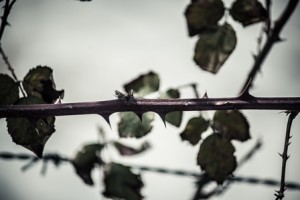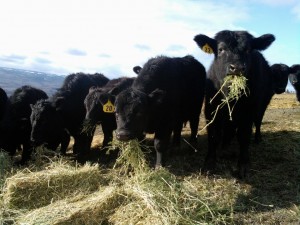Cattle Diseases
Lumpy Jaw
Also known as: Actinomycosis
Lumpy jaw usually affects the bony tissues of the head rather than the soft tissues (as opposed to Wooden Tongue). It is caused by infection with Actinomyces bovis, which is part of the normal bacterial flora of the upper digestive tract. The bacteria usually invade the skin through a wound or minor trauma caused by sticks, straw or barley awns, or when deciduous teeth are being shed.
The disease is chronic, with the clinical symptoms developing slowly. The initial swelling of the jaw bone/bones is usually painless and the animals exhibit few clinical symptoms. Once the disease has advanced, the lesions may affect the teeth and the position of the jaws, leading to inappetance and emaciation. Advanced lesions may show discharging sinuses with yellowish pus. The disease is sporadic in the UK but the incidence varies in different parts of the world.
Control and Prevention of Lumpy Jaw

Rough grazing can be a risk factor for lumpy jaw as it may cause trauma, allowing the normal flora bacteria Actinomyces bovis to establish infection in the bony tissues of the mouth.
Avoiding rough grazing, soil-contaminated silage and “weedy” hay/haylage or straw for cattle feed usually prevents trauma to mucosal membranes in the mouth.
In the case of an isolated incident in an individual animal, the best approach to prevention and control is to isolate and humanely slaughter the affected animal as soon as economically feasible or when the animal starts exhibiting clinical symptoms of pain and inappetence.
In an outbreak, it is important to identify the causative factors of the predisposing lacerations in the mouths of the affected animals. This is likely to be a feed source that, once identified, should be removed. Again, humane slaughter of affected animals is necessary at the appearance of clinical symptoms.
As the causative bacteria do not survive long in the environment and are present in the mouths of healthy cattle, the removal of the predisposing feed source is adequate for controlling the disease within a herd. If the problem persists, it is important to look for further sources of predisposing factors and eliminate them.
Treating Lumpy Jaw
Veterinary attention should be sought for cases, and it is important to differentiate between other causes of facial swelling, such as localized abscesses or Actinobacillus (Wooden tongue) infection as they carry a better chance of recovery. Penicillin treatment can be used to treat less advanced cases. Due to the chronic and invasive nature of the lesions, most treatment results fail, and lesions may recur soon after. Humane slaughter is recommended if there is no response to treatment or if cases are losing excessive weight. When treatment is advocated on animal welfare grounds for temporary improvement (recently calved suckler cows, cows in late gestation), a vet should always be involved in the treatment of the condition.
Lumpy Jaw and Welfare

The bacteria that cause lumpy jaw (Actinomyces bovis) do not survive well out in the environment, so often the removal of the feed source that causes the injuries is sufficient for preventing reoccurrence of the disease. Photo by Greg Newhall
Any animal showing signs of teeth lesions, malalignment of the jaws, difficulty to chew and/or inappetence appear should receive veterinary attention and/or arrange for humane slaughter without delay.
Removal of predisposing feed or grazing is also important from the animal welfare point of view, in order to prevent further suffering.
Good Practice based on Current Knowledge
When dealing with individual animals with lumpy jaw or with outbreaks of the disease, it is good practice to:
- Examine early any animals with “mouth” symptoms (excess salivation, difficulty in mastication, teeth problems etc.) and contact a vet if lumpy jaw is suspected
- Humanely slaughter affected animals if the condition is advanced
- If an affected animal is not slaughtered immediately for welfare reasons (suckler cow with a small calf, cow in late gestation etc.), its clinical condition should be assessed regularly by a veterinarian and treatment should be initiated if the animal is judged to be suffering from the symptoms
- Always attempt to identify the predisposing factor (feed or grazing) and eliminate it immediately, even when only one animal is affected


 British English
British English

Comments are closed.